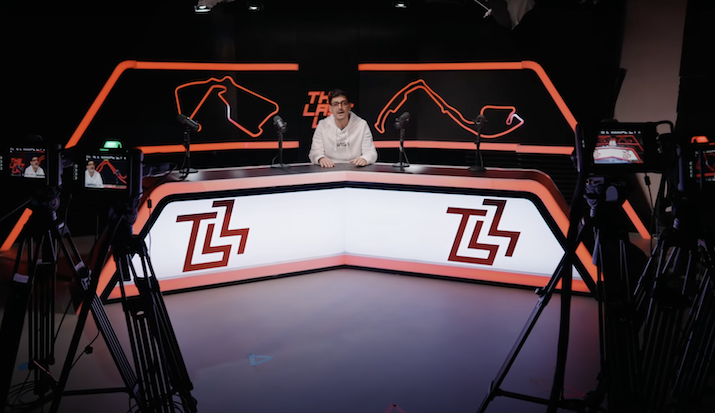The Fellas Studios Formula 1 podcast streamed with Blackmagic Design

The Fellas Studios, the operation behind podcasts including Saving Grace and The Fellas, is using a multi-camera workflow featuring the Blackmagic Studio Camera 4K Pro for its new Formula 1 podcast, The Last Lap.
The show began as a pre-recorded podcast hosted by Tom McCluskey and Niran Yesufu. However, Elliot Hackney, managing director of The Fellas Studios, recognised that shifting to a live format could lead to even greater audience engagement, particularly when it came to the race season.
“After the success of shows like The Fellas and Saving Grace – now the biggest female-led podcast in the country – we wanted to keep building a community. Live shows are a great way to do that,” said Hackney. “The Last Lap is our pilot concept for a watch along show, which meant rethinking our studio capabilities.”
The Fellas Studios turned to live stream consultant Alex Pettitt from Alex.Live for the build and opted to base its new studio workflow on five Blackmagic Studio Camera 4K Pro units. Four are designated as singles for guests, with the final unit as a wide position.
Video feeds run over fibre optic HDMI into a racked ATEM Mini Extreme ISO live production switcher, providing one cable operation for two-way communication to the ATEM for tally and camera control.
With no camera operators and a production team of just two, simplicity and ease of use were key. “While it is typically a case of set and forget, the ability to jump into the ATEM Software Control while live to adjust a camera’s focus was important given there are no camera ops,” explained Pettitt.
In fact, the cameras are used across multiple live and pre-recorded shows, not just The Last Lap. To allow for a different look and style per show, custom LUTs are loaded onto the cameras.
“One key benefit of this build is that it has a small footprint and can be packed up and moved for external shoots and streams. There are no big audio, lighting or video surfaces that require table space, with everything controlled over the network from a mouse, keyboard and control deck,” said Pettitt.
At the heart of everything is a broadcast rack that holds an Ethernet switch and WiFi router to manage the internal broadcast network. The rack also houses a Behringer audio mixer and the ATEM Mini Extreme ISO, with an original ATEM Mini providing additional inputs.
The streaming encoder on the ATEM Mini Extreme ISO is then used to push a program to Restream for live distribution. At the same time, the ATEM is ISO recording to an SSD so that a show can be clipped and repurposed after the live stream for social media.
Whether it’s focusing the cameras, controlling mic levels and talkback, triggering playback from a HyperDeck Studio HD Plus, or making camera cuts on the ATEM Mini Extreme ISO, all aspects of the studio workflow can be operated from a control deck, or the ATEM Software Control.
The HyperDeck Studio HD Plus feeds into the ATEM Mini Extreme ISO as a source via the ATEM Mini, freeing up an input and making it easier to swap out when live.
An UltraStudio HD Mini capture and playback device facilitates key and fill graphics from a Mac Mini to the ATEM Mini Extreme ISO. With graphics playing an essential part in telling a race’s story, this allows the production team to incorporate data-fed graphics on the stream using Singlular.live.
“Our audience engagement has gone through the roof, giving us the confidence to do more live,” noted Hackney. “Historically, people used to watch live TV muted, with their favourite commentator playing on the radio. We’re now seeing a generation that uses second screens similarly, only with more interactivity, so in some ways, it’s unsurprising that this format works so well.”

